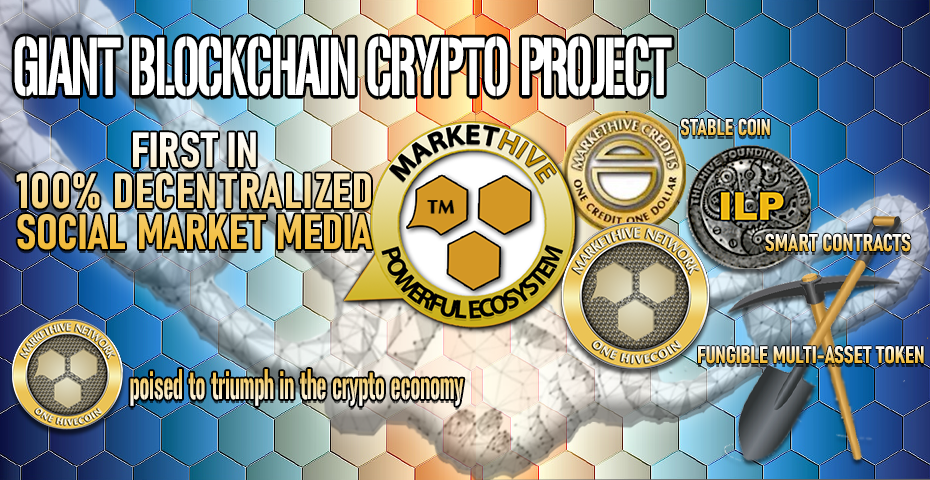


Image Source: Pixabay
What is a crypto airdrop and how does it work?
Crypto airdrops are a marketing strategy used by startups to give tokens to existing cryptocurrency traders for free or in exchange for minimal promotional work.
For most crypto investors, there is nothing more important than making a return on their investment. Thanks to the volatility, this can be done quickly or it can be a hugely difficult task. That's why crypto airdrops are an inexpensive way to make additional returns on your portfolio. After all, airdrop tokens are free and never hurt, right?
Almost daily there are new crypto airdrops, with some easier to obtain than others. Not every airdrop is equally reliable. Crypto airdrops always seem very lucrative at first, but they can also cause problems. To make sure you can profit from crypto airdrops, but also see through any pitfalls, you can read all about crypto airdrops and how they work in this article!
A crypto airdrop is a method by which you can earn free crypto from a crypto project. There are several ways to receive these tokens. Many times an airdrop is associated with free cryptocurrencies, but this is not necessarily true. You have to put in time and effort or you may have to deal with transaction fees. However, it is also possible to participate in an airdrop for free!
You're probably wondering; how do crypto airdrops work? Crypto projects have a certain amount of available tokens that they give to people who meet eligibility requirements. By completing tasks, you can become eligible for these tokens. There are several ways to participate in crypto airdrops. Often you have to sign up for an airdrop or perform other actions. After completing tasks or winning the tokens, you can claim them or they will be deposited into your wallet. Read More
SIMBA Chain Makes Building On The Blockchain Easier Than Ever For All With SIMBA Blocks
SIMBA Chain, the leading provider of blockchain enterprise solutions, has released its new blockchain cloud service, SIMBA Blocks. The intuitive platform allows organizations to interact with familiar Web2 interfaces while tapping into decentralized Web3 infrastructure and all of its benefits, including transparency, accountability, and monitoring. From supply chain management to building NFT marketplaces, SIMBA Blocks allows anyone to integrate blockchain solutions into their projects seamlessly.
To simplify the integration of blockchain solutions into traditional organizations, SIMBA Blocks provides a user-friendly web interface for effective monitoring and administration. The cloud service platform also offers a drag-and-drop smart contract development that enables developers, universities, companies, and other organizations to quickly and efficiently build Web3 solutions. The data models created by the smart contract designer are made searchable by GraphQL directly in the SIMBA Blocks UI.
Users can seamlessly migrate between different blockchain protocols, allowing them to stay agile and adaptive to project changes. This flexibility ensures that clients can always select the best solution for their unique needs. Read More
Indian blockchain firm 5ire secures $100M to fund sustainability-focused project
An Indian development firm looks to create a bridge between sustainability and blockchain technology with a proprietary layer-1 protocol incentivizing the use of UN sustainable development goals.
An ambitious sustainability-based blockchain project has secured $100 million in a Series A funding round to drive its development.
Indian entrepreneurs Pratik Gauri and Prateek Dwivedi have spearheaded the foundation of a fifth-generation blockchain network known as 5ire, which looks to incentivize the implementation of United Nations’ sustainable development goals (SDGs) for users of its system.
The project has now attracted a total of $121 million in investment. A seed round secured $21 million from notable tech investors including Alphabit, Marshland Capital, Launchpool Labs, and Moonrock Capital.
A subsequent Series A fundraising round secured a $100 million investment from United Kingdom-based conglomerate SRAM & MRAM. 5ire intends to expand its business into Asia, North America, and Europe in addition to its operations center in India.
5ire presents a novel use case for blockchain technology that looks to promote practices that are aligned with United Nations SDGs. Its 5ireChain network is described as a first-layer, sustainability-driven, and fifth-generation blockchain. Read More
Ankr Network’s 2.0 upgrade aims to improve Web3 decentralization
Ankr is one of the largest remote procedure call (RPC) endpoint providers in the crypto space, which are critical for Web3 DApps that connect with blockchains.
Decentralized Web3 infrastructure provider Ankr Network (ANKR) has introduced its Ankr Network 2.0 upgrade aimed at transitioning blockchains into more resilient node networks.
The upgrade is detailed in the Ankr 2.0 Whitepaper, which was obtained by Cointelegraph ahead of its release later on Thursday.
The upgrade centers around making Web3 more decentralized through several new features, such as an option to run an independent node, the ability to stake ANKR tokens on a full node, and the Ankr DAO.
A spokesperson explained to Cointelegraph:
“The upgrade is aimed at transitioning more blockchains, and the DApps built on them, to more distributed and resilient node networks supported by independent node providers.” Read More

HVC is poised to triumph in the crypto economy.
Markethive is a monolithic blockchain project currently operating as a social network, an entire inbound marketing platform with email, blogging, and digital media capabilities that broadcast to the vast internet. It’s a complete Market Network and the first of its kind.
Markethive is predominantly a free system where users can access a platform that can cost more than $2,500 offered by other marketing platforms. There are, of course, upgrades that open up more tools and monetization opportunities, the first being the Entrepreneur One Loyalty Program, and coming soon is the Premium Upgrade.
The many domains Markethive has and its autonomous cloud systems that ensure its sovereignty and longevity make it untouchable and immune from the tech giants’ rule and biased agenda. But can still remotely infiltrate the social media platforms and reach the multitudes either locked in or looking for an alternative meritocratic medium.
In other words, wherever you go, Markethive is there, anywhere and everywhere, delivering its message via its community of entrepreneurs to a far-reaching audience. This next-generation social market media is poised in the wings, and when the time is right, it will emerge as a shining light to lift people up and bring financial sovereignty and hope in this gloomy and uncertain world.
The video platform, conference rooms, the unique four specific news feeds currently in development, and many other projects and incentives add to the credibility and need for an ecosystem in the social media and digital marketing space. Read More
Astar Network Opens New HRMP Channels With Acala
Astar Network has opened a new HRMP channel with Acala to strengthen the mission of creating the next generation of innovative decentralized apps and process the adoption of Web3. The update brings aUSD to Shiden, the sister network of Astar.
Astar Network made the announcement. It comes after the previous week’s opening of the HRMP channel between the Shiden and Karura networks. The channel between the two allows the free movement of tokens across different chains. Tokens included are KAR, SDN, and aUSD.
User experience in the cross-chain transaction was considered by duly integrating the assets into the portal.
Astar Network taking steps to further its activities was made more evident by the end of the first quarter when the network joined the aUSD ecosystem worth $250 million to fund startups that are in their early stage with dedication and commitment to achieve the goal.
Startups supported were involved in building applications that have strong use cases of stablecoins on Kusama and Polkadot parachain. Read More
Internet Computer Protocol achieves 1B blocks in just over a year
Internet Computer Protocol has achieved the milestone of processing one billion blocks in just over a year in production.
The project’s lead developer, Zürich-based nonprofit DFINITY Foundation, made the announcement earlier today.
“Internet Computer is a unique blockchain powered by game-changing ‘chain key crypto’. It runs at web speed, with web efficiency, can scale its capacity without limit and, uniquely, the smart contracts it hosts can serve interactive web experiences directly to users,” says Dominic Williams, Founder and Chief Scientist of the DFINITY Foundation.
“The Internet Computer aims to host the world’s mass market web3 services 100 percent on-chain and then one day to completely replace traditional IT such as big tech’s centralized cloud computing services.”
Many within the blockchain equipment see Internet Computer Protocol as a decentralized version of cloud platforms like Amazon Web Services or Microsoft Azure.
“Naturally, a blockchain like this must process enormous numbers of blocks. I’m incredibly proud to have played a part in producing a blockchain that has now processed one billion blocks in just over a year since genesis,” adds Williams.
“This milestone bears testimony not only to the potential of the Internet Computer but to the efforts of those involved in the years of groundbreaking R&D that made this possible”. Read More
Blockchain-based platform reinvents omnichain interoperability through validated event data
Any data that includes time is considered time-stamped, yet, no project until now has thought to use blockchain technology for something far more fundamental: to transact with event data.
Systems built on blockchain are enhanced by the security and efficiency afforded by distributed ledger technology. Transactions and events are immutably encrypted into successive blocks enabling perpetual validation thereafter. These are also inherently protected from tampering due to the distributed nature of the networks.
So far, there have been several different ways that new systems are utilizing these advantages. For example, supply chains would naturally benefit from these features, given their clear transactional schema and due to their interconnected complexity.
Blockchain technology even enables new disruptive forms of exchange in the form of cryptocurrencies, which ensures even further disruption of decentralized finance (DeFi) and nonfungible tokens (NFTs). Yet, no project until now has thought to use blockchain technology for something far more fundamental: to transact with event data.
The ambition of Analog is to do just that, immutably record event data on-chain, and, according to the company, its mission is to leverage validated event data for cross-chain communications and asset transfers.
The Analog network is the first realistic attempt to help the world to usher in omnichain interoperability through validated event data. It establishes a radically decentralized, secure, and trustless layer where multiple networks like Bitcoin and Ethereum can anchor their transactions. Most importantly, the Analog Timegraph creates a validated record and pipeline of event data that developers of decentralized applications can leverage to power the next generation of applications. Besides dApp developers, Analog enables users to interact with all dApps across the entire Blockchain ecosystem directly from their wallets. Read More
Q2 Report Paints A Pretty Picture Of Polkadot
Polkadot is red hot. That’s the message emanating from the multi-chain project, whose new Q2 report paints a picture of a highly active ecosystem. Data pertaining to dev commits, parachain auctions, grants, staking, and governance suggest that Polkadot is moving at a rapid pace and in the right direction, even as the market endures trying conditions.
It’s not just Polkadot that’s been going from strength to strength either: canary network Kusama, designed as Polkadot’s testbed, is also flourishing, while proving that it’s much more than a testnet. Even skeptics will be forced to concede, on the basis of its Q2 report, that Polkadot has been shipping.
Substrate Stats Stack Up
Composed of a main relay chain and a series of interconnected parachains, Polkadot is built on Substrate, a blockchain framework developed by Parity Technologies. Substrate is at the heart of Polkadot’s blockchain of blockchains, given that new projects joining its ecosystem are compelled to master it: Solidity simply won’t cut it here. On this metric, Polkadot is in good health, reporting more than 1,400 active monthly developers. Only Ethereum boasts more devs; and Polkadot’s figure is an impressive YoY increase of 75%.
Not every project entering the world of Polkadot will want to get its hands dirty with Substrate, of course; to facilitate this, a Substrate marketplace has sprung up, shipping pre-built blocks of code. This allows projects to create their own chain without needing to code everything from the ground up. Read More
Disclaimer: These articles are provided for informational purposes only. They are not offered or intended to be used as legal, tax, investment, financial, or any other advice.